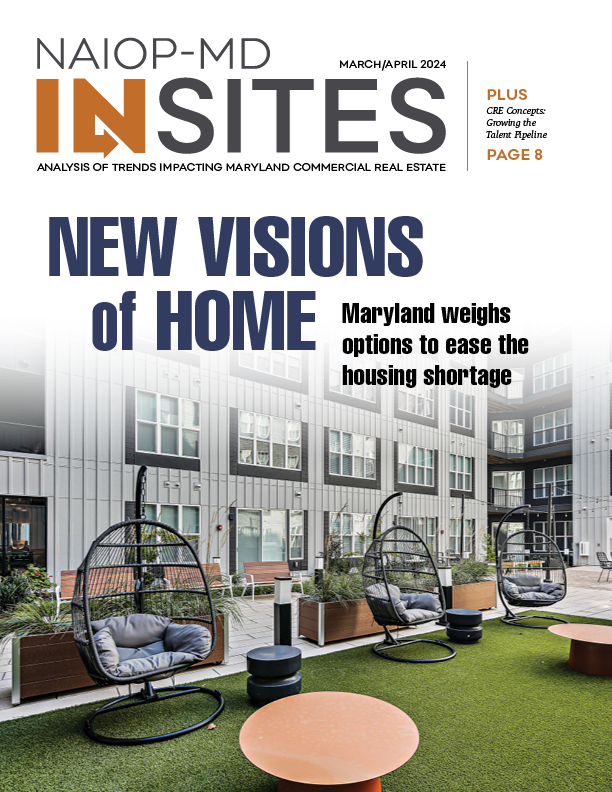 In the span of just four months, representatives of MCB Real Estate marked milestones in two, dramatically different residential developments.
In the span of just four months, representatives of MCB Real Estate marked milestones in two, dramatically different residential developments.
On a former brownfield site in Greektown, MCB held a ribbon cutting ceremony in October for The Lofts at Yard 56 — 227 luxury apartments in a building with a 24-hour fitness center, structured parking, pet spa, game room, game lawn, open concept lobby lounge, collaborative workspaces, a furnished courtyard with grill stations, and a sky lounge that delivers sweeping views of the city. In addition to delivering Class A apartments, The Lofts completed an award-winning, mixed-use, live-work-play environment in a neighborhood that had been blighted for decades.
Standing in front of older and more modest apartment homes in Nottingham in February, MCB and local politicians announced the largest attainable housing deal in the history of Baltimore County. The county had agreed to provide a joint venture of MCB and Goldman Sachs Asset Management’s Urban Investment Group with a $6 million deferred loan and a 20-year PILOT (Payment In Lieu of Taxes) on 918 units in three multifamily communities. In return, MCB would renovate and maintain the older buildings, and preserve at least half of the units at affordable rental rates for up to the next 40 years in order to expand the county’s stock of quality, workforce housing.
Increasingly, developers, real estate professionals, economists, politicians and activists are calling for new ideas for developments, new approaches to community planning, and new incentives and enabling policies in order to address Maryland’s shortage of both market rate and affordable housing.
The challenges presented by that shortage are clear and growing. In January, Governor Wes Moore warned that the Maryland housing shortage has reached 96,000 units and the state has been consistently underproducing new housing at a rate of 5,600 units annually. In a recent poll by Maryland Realtors, 30 percent of voters aged 18 to 34 said they were considering moving out of state due to prohibitive housing costs. And those costs are getting more prohibitive. In 2023, the median home price in Howard County was $622,000 – up more than 15 percent in a single year.
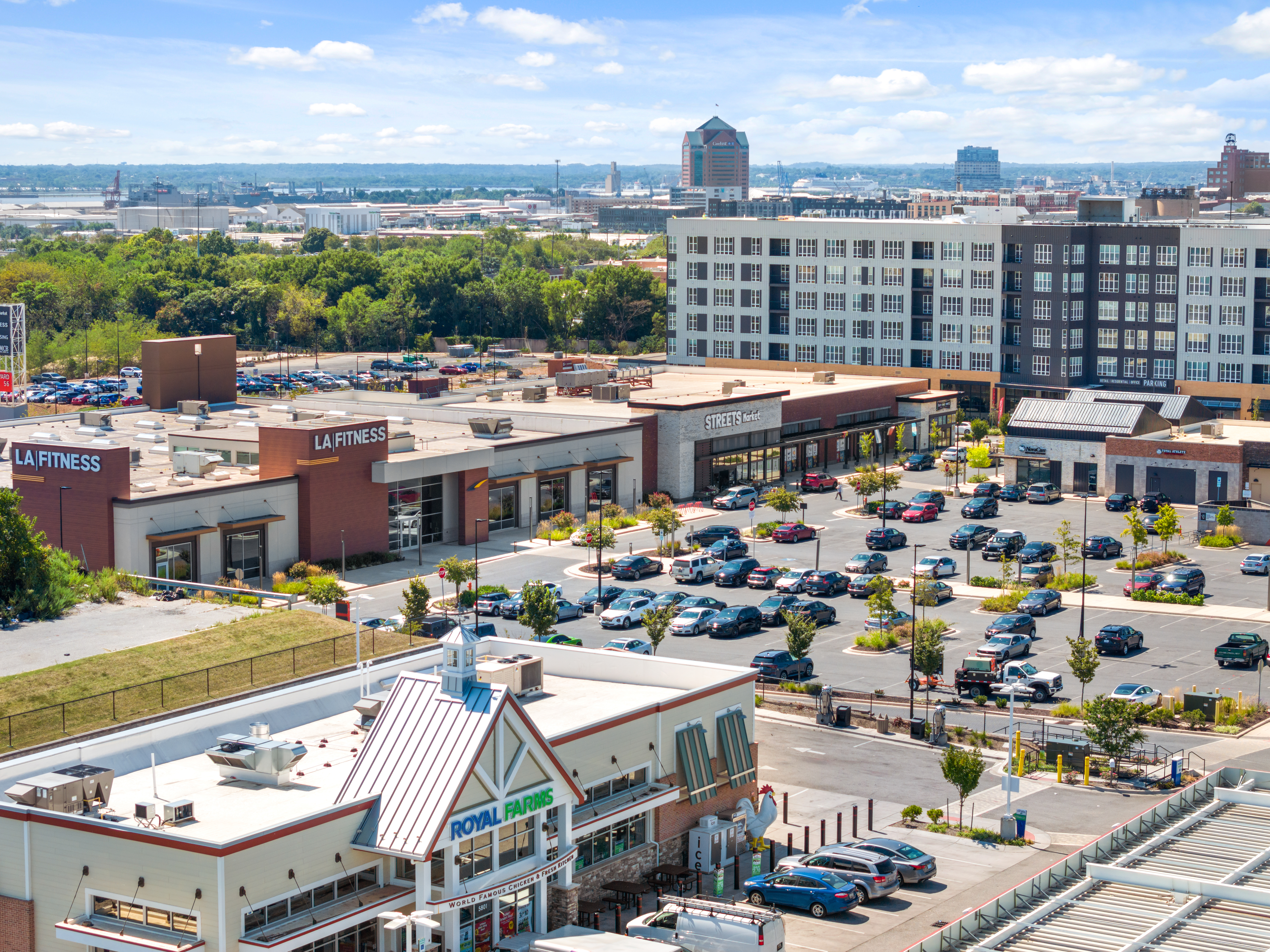
The Lofts at Yard 56 added high-end residential to an award-winning, mixed-use development in a previously struggling neighborhood. Photo courtesy of MCB Real Estate.
An effective response to the housing shortage would deliver major benefits. It would make Maryland a more attractive place to live, grow the local labor force and boost the state’s economy. It would also create new opportunities for both residential and commercial developers.
“When you are tackling such a huge issue as affordable housing, you need to hit it from every angle and with every viable tool,” said Daniel Rigaux, Vice President and Head of Multifamily Development at MCB Real Estate.
The Baltimore County PILOT program, he said, ensures that the difficult task of preserving and modernizing existing affordable housing “pencils out and delivers an acceptable return to our investors.”
MCB’s PILOT project will also ensure that set percentages of the apartments and townhouses at the three sites in Nottingham, Perry Hall and Sparrow’s Point will remain affordable to individuals earning 60 percent of the region’s Average Median Income (AMI) or 80 percent of AMI. The remainder will rent at market rates — an arrangement that both supports the project’s financials and prevents low-income earners from being segregated.
Similar, “inclusionary zoning” initiatives could improve both the availability and integration of housing across a wide range of price points, Rigaux said. For example, more local governments could provide tax incentives or density bumps to developers who ensure that a percentage of units remain affordable in new or renovated buildings.
“That template is fantastic,” Rigaux said. “It is a delicate balance but trying to integrate workforce housing into market-rate projects is a really positive thing… In Bethesda, which has the highest rental rates in Montgomery County, you have some units preserved at 80 percent AMI. That’s really meaningful. It opens up rental opportunities and home ownership opportunities to people who normally would not have access to them.”
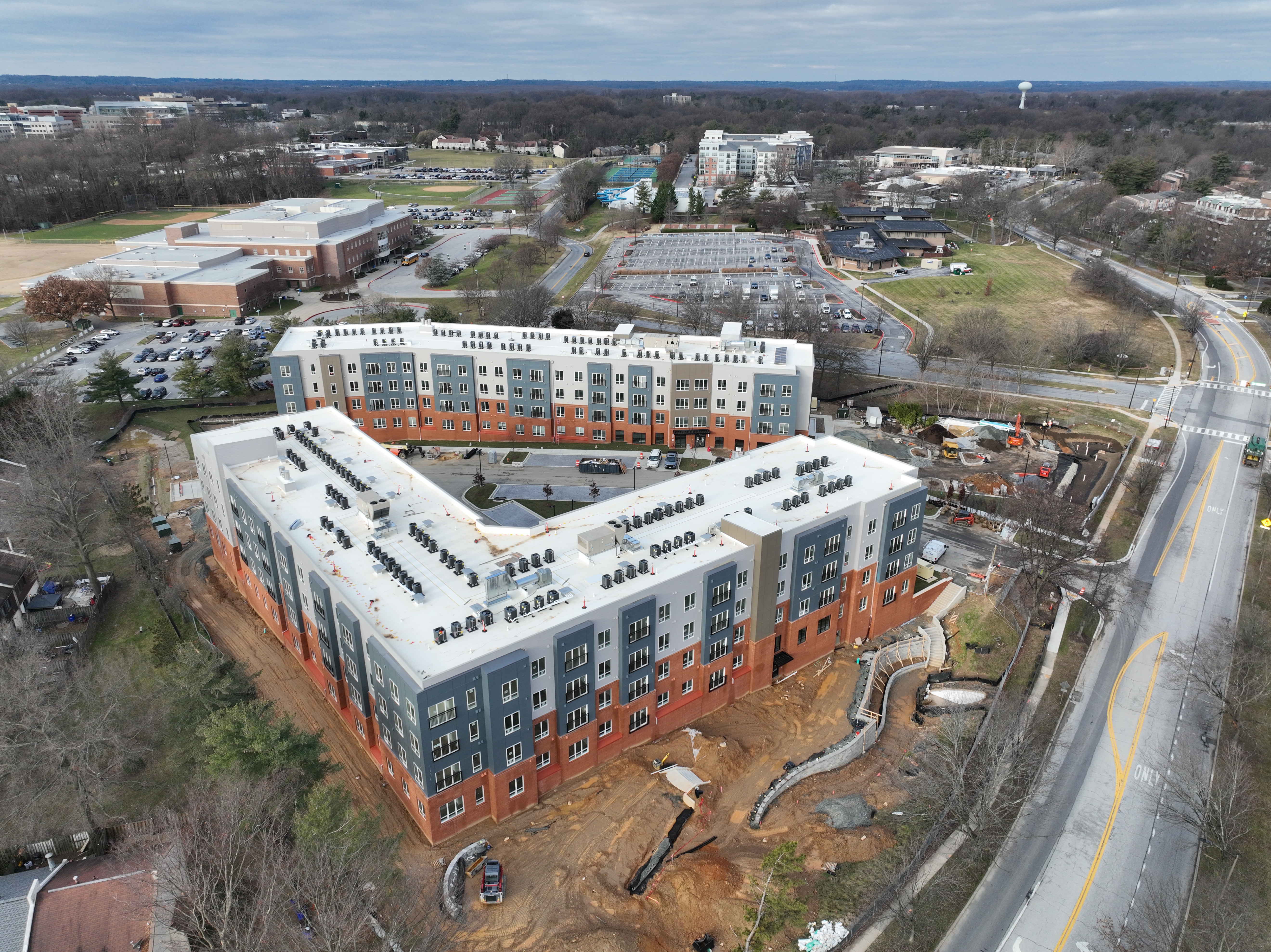
The Residences at Roslyn Rise project razed 50-year-old townhomes and created new, high-quality and highly efficient workforce housing. The project tripled the housing density on site. Photo courtesy of Harkins Builders.
In Columbia, Harkins Builders is nearing completion on The Residences at Roslyn Rise — two new, affordable, four-story buildings developed by Enterprise Community Development that will contain 153 apartments. Two different incentives facilitated the venture — financing of 4 percent and 9 percent through the low-income housing tax credit (LIHTC) and county permitting that enabled the developer to raze existing townhouses built in the 1970s and triple the housing density onsite with the new apartment buildings.
Even with those incentives, successfully executing such projects is challenging, said Steve Rubin, Project Development Executive at Harkins. The LIHTC program is limited and highly competitive. Viable projects often have to wait two to three years to be accepted into that program. During that wait, rising construction prices or financing costs can render a project unfeasible or property owners can sell sites to other buyers.
In addition, increasing design requirements for affordable housing projects have been driving up development costs.
“Affordable buildings appear to be market-rate housing from the outside,” Rubin said. “They also have to meet higher, energy efficiency standards.”
Roslyn Rise will meet National Green Building Standard requirements and offer various amenities, including a fitness center, after-school tutorial space, community room, dog walk and outdoor patio.
“In some cases, affordable buildings can be more expensive than market-rate buildings,” Rubin said.
Even renovations of existing properties to preserve workforce housing can be very costly — as much as $100,000 to renovate a single garden apartment, Rubin said.
Consequently, builders typically must provide extensive design-assist and value-engineering services in order to keep construction budgets manageable.
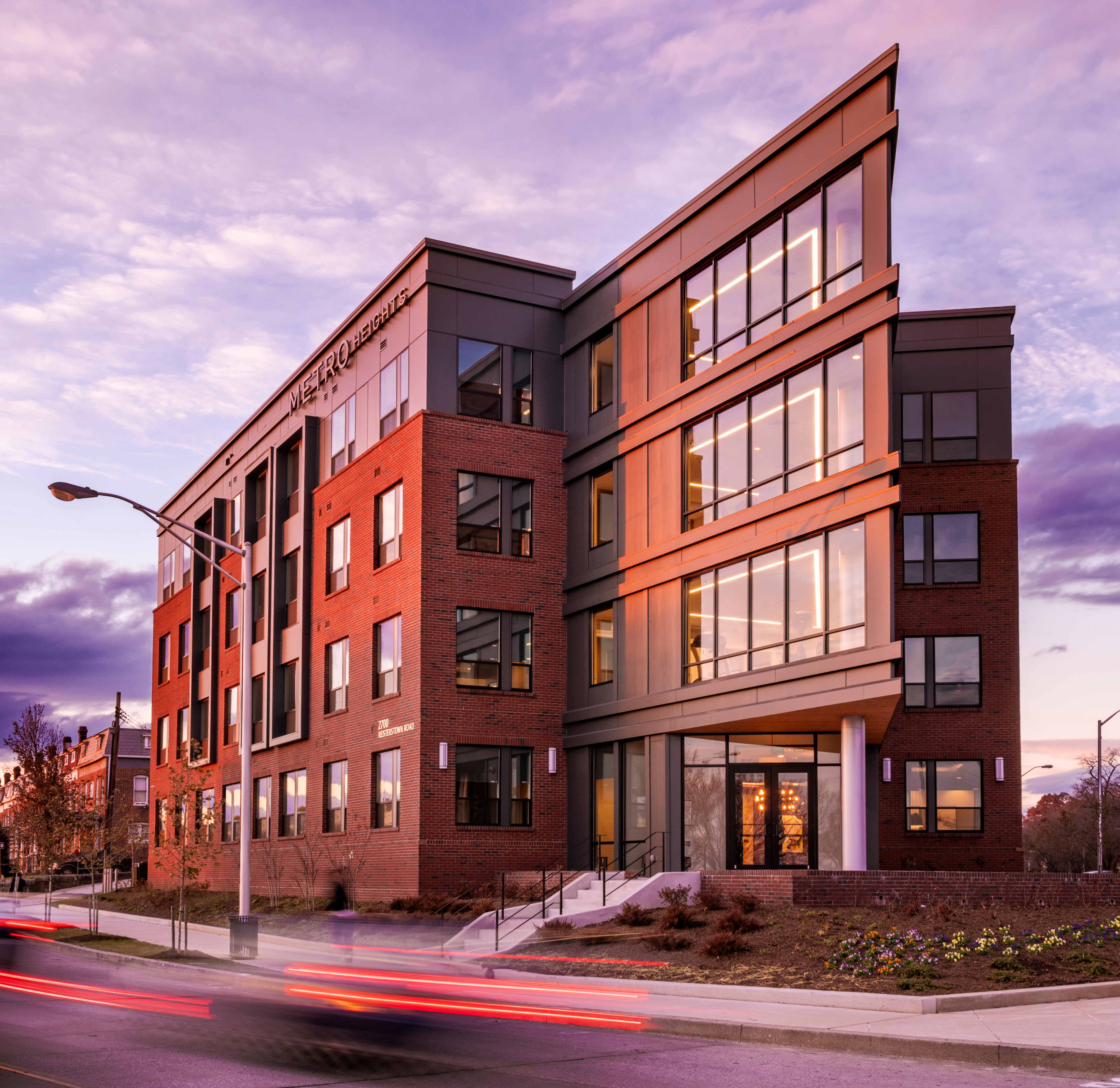
At Metro Heights at Mondawmin and numerous other projects, Harkins Builders has used design-assist and value engineering services to deliver affordable housing on budget. Photos courtesy of Harkins Builders.
Market-rate housing, however, is also facing heightened challenges. Following a recent period of hypergrowth (roughly 600,000 multifamily building permits annually from 2021 to 2023), the multifamily construction market is expected to contract beginning this year. Many developers are hitting a ceiling on how much they can charge for apartment rents or condominium purchases. Meanwhile, construction and financing costs have remained high.
For example, “parking garages have become prohibitively expensive – north of $20,000 per space to build a parking deck,” Rubin said. “If you are building a 300-unit, market-rate, high-density community, you need, conservatively, 1.8 spaces per unit. That’s 540 spaces at $20,000 per space. That is over $10 million just to build the garage.”
Consequently, many developers, economists, politicians and others are urging state and local governments to rethink their approach to development permitting and community planning in order to ease the shortage of housing across all price points.
In some jurisdictions, impact fees can present a major deterrent to development.
“In some counties, you have tremendous impact fees — north of $30,000 per door,” Rubin said. “You are trying to incentivize a developer to take a risk but they have to write a check to the municipal government for $30,000 to $40,000 per door just to get a building permit.”
The combined effect of high impact fees, construction costs and financing rates has stalled several, planned multifamily developments in Maryland, Rubin said. “They no longer pencil out… Their pro formas are upside down.”
Local governments need to conduct “holistic reviews of their policies and requirements for development,” said Stacy Silber, a land use attorney with Lerch, Early & Brewer, Chtd. “There are multiple different laws that create financial requirements – impact taxes, fees, transportation improvement requirements. Localities need to evaluate the cumulative impact is of all those requirements on development and look at how that impact compares to other jurisdictions that are also trying to attract investment in residential development.”
Furthermore, “I would encourage jurisdictions to have very candid conversations with investors and ask the question: What would it take for you to invest your capital here rather than another area of the country? What would convince you to invest in more residential developments here and/or invest in the conversion or razing of underperforming office assets? Open dialogue, with legislative follow-up, could help effect positive change in many jurisdictions,” Silber said.
Increasingly, local governments are considering — or being pressed to consider — zoning and master plan changes.
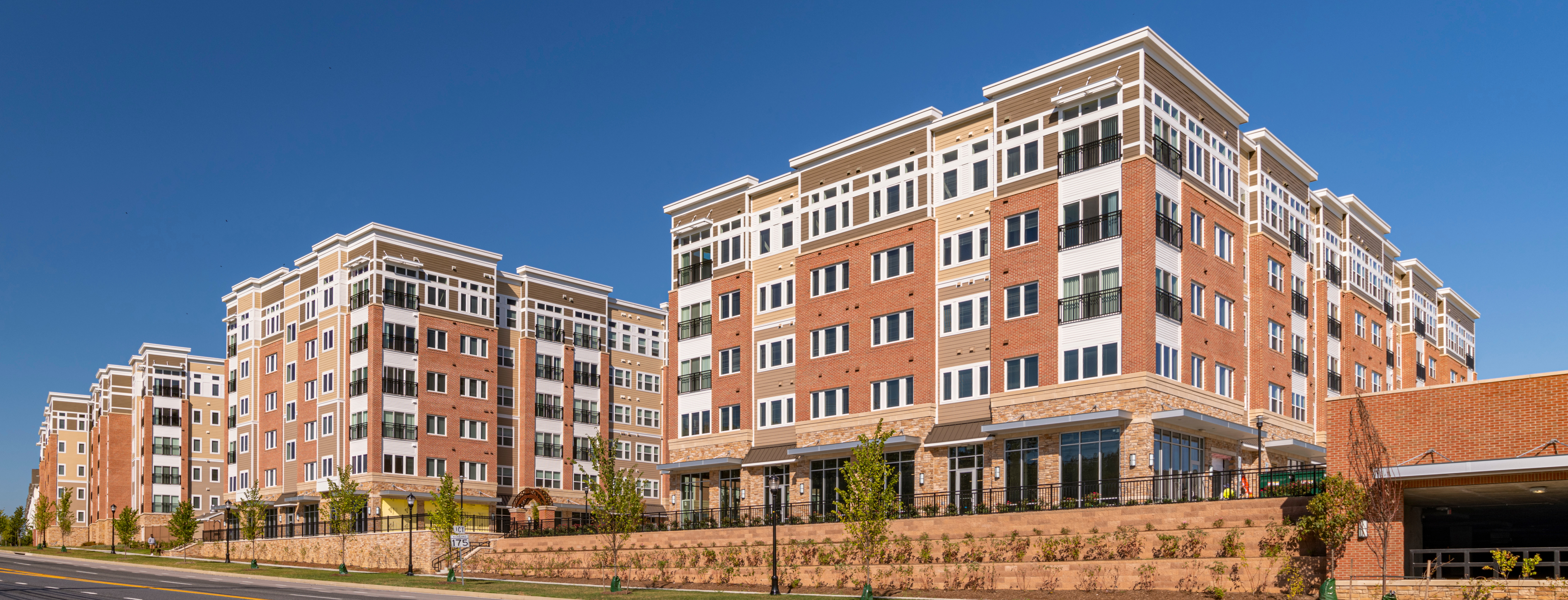
Verde at Howard Square in Elkridge is one of the luxury, super-sustainable developments completed in Maryland recently. High construction and financing costs, however, are expected to slow multifamily development. Photo courtesy of Harkins Builders.
Montgomery County’s decision in 2014 to zone large portions of the county commercial-residential proved to be a game-changer, Silber said.
The zoning established density limits but freed developers to alter a property’s use in order to meet market conditions. It has already facilitated very successful projects, such as Pike and Rose in Rockville, Rigaux said. And further adjustments allowing greater density or taller buildings in select locations, such as near transit, are improving the feasibility of some projects.
Howard County’s new master plan, HoCo By Design, aims to improve housing availability and affordability by facilitating mixed-use development, especially in Columbia’s village centers and Columbia Gateway.
“The county needs a better array of price points in housing,” said Jennifer Jones, CEO of the Howard County Economic Development Authority. “My parents moved here in the 1970s and they got a starter home. I don’t think you can do that anymore. The price points are just too high.”
HoCo By Design aims to create 27,000 new residential units by 2040 and tackle that “missing middle housing market,” Jones said. In particular, more townhomes, duplexes, fourplexes and condominiums could provide options to middle-income families.
“The Department of Planning and Zoning has looked around the county to identify where there is potential for more housing,” Jones said. “Gateway has big, untapped potential. It’s 1,000 acres.”The county envisions transforming Gateway into a vibrant live-work-play environment with houses, offices, restaurants and retail all within walking distance of each other. The Gateway Advisory Committee is scheduled to begin circulating a draft redevelopment plan later this year and finalize the plan in 2025.